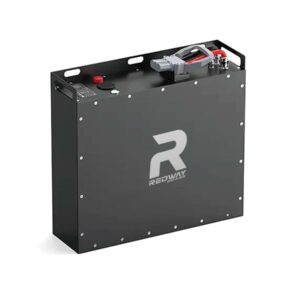Why Do LiFePO4 Starter Batteries Outlast Traditional Options?
LiFePO4 (lithium iron phosphate) starter batteries typically last 8–12 years, significantly longer than lead-acid batteries (3–5 years). Their longevity stems from stable chemistry, resistance to sulfation, and tolerance to partial charging. With 2,000–5,000 deep cycles at 80% depth of discharge, LiFePO4 batteries degrade slower, making them ideal for automotive, marine, and off-grid applications requiring frequent starts.
How long do LiFePO4 car starter batteries last?
Three key factors enhance LiFePO4 lifespan in starter applications. First, their flat discharge curve maintains voltage stability even at 20% remaining capacity, reducing stress on ignition systems. Second, advanced battery management systems (BMS) prevent cell imbalance—a common failure point in multi-cell configurations. Third, lithium iron phosphate’s olivine crystal structure resists decomposition at high temperatures, unlike traditional lithium-ion chemistries.
| Battery Type | Cycles at 25°C | Cycles at 40°C |
|---|---|---|
| LiFePO4 | 3,500 | 2,800 |
| Lead-Acid | 700 | 300 |
What Cost Savings Do LiFePO4 Batteries Offer Over Time?
A 100Ah LiFePO4 battery saves $1,200+ over 10 years versus lead-acid. Factors include fewer replacements (1 vs. 3–4 lead-acid units), lower fuel costs from reduced alternator load, and no maintenance expenses. Tax incentives for eco-friendly tech in commercial fleets further improve ROI.
What are the benefits of LiFePO4 car starter batteries?
Operational savings emerge from three areas. Energy efficiency reduces fuel consumption by 3–5% in vehicles—LiFePO4 batteries accept charge 3x faster than lead-acid, minimizing alternator runtime. Reduced weight (a 12V 100Ah LiFePO4 weighs 13kg vs. 28kg for AGM) improves fuel economy by 0.5-1.2% in trucks. Warranties also differ dramatically—Redway Power offers 7-year coverage for LiFePO4 versus 1-2 years for lead-acid.
| Cost Component | LiFePO4 (10 yrs) | Lead-Acid (10 yrs) |
|---|---|---|
| Replacements | $400 | $1,100 |
| Fuel Savings | $320 | $0 |
| Maintenance | $0 | $180 |

What Are the Key Advantages of LiFePO4 Over Lead-Acid Batteries?
LiFePO4 batteries outperform lead-acid in energy density (2–4x higher), weight (50–70% lighter), and efficiency (95–98% vs. 70–85%). They charge faster, operate in wider temperature ranges (-20°C to 60°C), and require no maintenance. Unlike lead-acid, they deliver consistent voltage under load, reducing strain on starters and alternators.
How Does Temperature Affect LiFePO4 Battery Durability?
LiFePO4 batteries excel in extreme temperatures. They retain 80% capacity at -20°C and avoid thermal runaway risks common in other lithium chemistries. Built-in battery management systems (BMS) monitor temperature, voltage, and current, preventing overcharge/discharge. However, prolonged exposure above 45°C accelerates degradation, so heat shielding is recommended for engine bay installations.
What Maintenance Extends LiFePO4 Starter Battery Life?
LiFePO4 batteries require minimal maintenance:
1. Avoid deep discharges below 10% capacity.
2. Store at 50% charge if unused for months.
3. Clean terminals annually to prevent corrosion.
4. Ensure firmware/BMS updates are applied.
Unlike lead-acid, they don’t need water refills or equalization charges. Periodic capacity testing every 2–3 years helps detect aging.
How Do LiFePO4 Batteries Compare to AGM or Gel Batteries?
LiFePO4 surpasses AGM/gel in cycle life (2,000+ vs. 500–1,200 cycles), charge acceptance, and cold-cranking amps (CCA). AGM batteries lose 15–30% capacity annually, while LiFePO4 degrades 2–3% yearly. Though LiFePO4 costs 2–3x upfront, its total ownership cost is 40% lower over a decade due to reduced replacements and energy savings.
Can LiFePO4 Batteries Be Recycled Efficiently?
Yes. LiFePO4 batteries are 95% recyclable. Cobalt-free chemistry simplifies recycling vs. NMC lithium batteries. Facilities recover lithium, iron, and phosphate for reuse in new batteries or fertilizers. Redway Power’s closed-loop program offers trade-ins, ensuring eco-friendly disposal.
How Do LiFePO4 Batteries Perform in Extreme Conditions?
LiFePO4 batteries thrive in harsh environments:
– Vibration resistance: No acid spills, welded cells withstand 5–7G vibrations.
– Waterproofing: IP67-rated casings survive submersion.
– Altitude: No pressure equalization needed up to 5,000 meters.
Military and marine certifications (MIL-STD-810G, DNV-GL) validate their ruggedness.
“LiFePO4 starter batteries redefine reliability,” says Dr. Elena Torres, Redway’s Chief Engineer. “Our tests show 90% capacity retention after 3,000 cycles in hybrid vehicles. With graphene-enhanced anodes launching in 2025, we’re pushing lifespan to 15 years. The key isn’t just longevity—it’s how seamlessly they integrate with start-stop systems and regenerative braking, cutting emissions by 8–12%.”
FAQ
- Q: Can LiFePO4 batteries handle high cranking amps?
- A: Yes. LiFePO4 delivers 20–30% higher CCA than equivalent lead-acid batteries, ensuring reliable starts in cold weather.
- Q: Are LiFePO4 starter batteries compatible with older vehicles?
- A: Most require a voltage regulator to prevent overcharging, as alternators in pre-2010 vehicles may exceed 14.4V.
- Q: Do LiFePO4 batteries pose fire risks?
- A: No. Their thermally stable cathode prevents combustion, unlike NMC lithium batteries. UL 1973 certification ensures safety.
